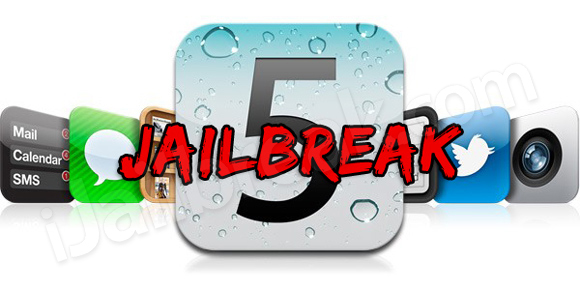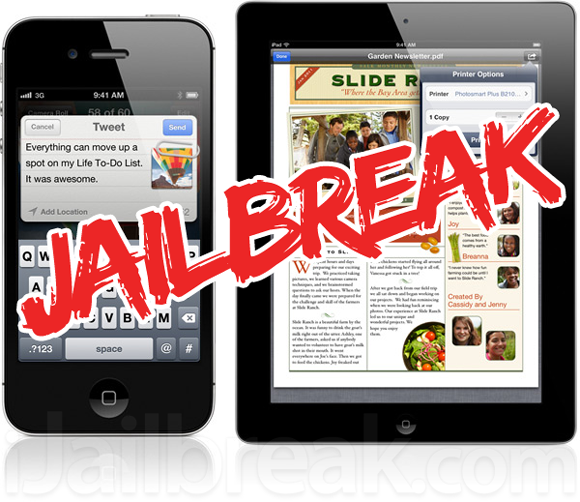I'm fed up, Apple. I've been patient—borderline masochistic, even. I understood that my iPhone 3G—almost three years old—is geriatric in consumer electronics years. I accepted that I wouldn't get the latest features. However, when iTunes prompted me to download iOS 4, I didn't expect it to slow my phone to a crawl. A reflexive sympathizer, I updated iOS 4 as far as you permitted—iOS 4.2.1—in the hope that I would reclaim the performance of iOS 3. It never materialized. I wasn't the only one to protest, but I was neither feisty enough to file a class action lawsuit nor so pliant to purchase a new iPhone, even if it is incandescent white. Instead, I resolved to boycott iOS 4 bydowngrading my iPhone. You didn't make it easy, Apple, but fortified with the Internet, tenacity, and a constantly replenished supply of coffee, I turned back the clock. This is how I did it, and this is why I'm not turning back.
Why I Did It
In March, Apple took my phone off life support: while iOS 4.3 gallivanted the web—armed with Personal Hotspots and a Nitro-charged Safari—Apple quietly pulled the plug on my iPhone 3G by freezing software updates at iOS 4.2.1. What I called iOS 4.2 was already a distant cousin to the iOS others knew. I was given a taste—folders, threaded e-mail, iBooks—but denied multitasking, Airplay, Airprint, and Game Center.
While I never expected Apple to ship every feature to every device, I won't lie—this stung. More than anything else, it stung because it revoked a hope. I updated again and again hoping that Apple would address what had dogged my iPhone since the introduction of iOS 4. At the end of the upgrade cycle, I was forced to confront an uncomfortable truth: this was as good as it could get. My response to that truth: defiance. I admit to Jailbreaking. I restored my phone (numerous times). Neither made a difference. So, with few other options and little to lose, I decided to transport my phone back to a time when waiting was a less prominent part of my digital life: iOS 3.In March, Apple took my phone off life support: while iOS 4.3 gallivanted the web—armed with Personal Hotspots and a Nitro-charged Safari—Apple quietly pulled the plug on my iPhone 3G by freezing software updates at iOS 4.2.1. What I called iOS 4.2 was already a distant cousin to the iOS others knew. I was given a taste—folders, threaded e-mail, iBooks—but denied multitasking, Airplay, Airprint, and Game Center.
How I Did It
It turns out, plenty of people are looking to downgrade, and even more seem to be posting instructions on how to do it. Unfortunately, many led me astray. Some sites suggested that I uninstall iTunes and re-install iTunes 7.5. This wasn't necessary. Other tutorials required multiple Shareware utilities. I only needed one. After a day of trial and error, I have constructed a simpler way backward, for you dear reader, by synthesizing information from here and here.
It turns out, plenty of people are looking to downgrade, and even more seem to be posting instructions on how to do it. Unfortunately, many led me astray. Some sites suggested that I uninstall iTunes and re-install iTunes 7.5. This wasn't necessary. Other tutorials required multiple Shareware utilities. I only needed one. After a day of trial and error, I have constructed a simpler way backward, for you dear reader, by synthesizing information from here and here.

I began by downloading the appropriate version of iOS 3.1.3 for my iPhone 3G: iPhone1,2_3.1.3_7E18_Restore.ipsw. At 240 megabytes, it weighs considerably less than recent updates to iOS 4. The second, considerably smaller, requirement is RecBoot a teeny-tiny utility used to get your phone into and out from recovery mode.
Contrary to many instructions, you do not need to use button combinations to put your phone into recovery mode. Instead, I used RecBoot. After plugging my phone into my computer and quitting iTunes, I opened RecBoot and clicked "Enter Recovery."
Once finished, I re-launched iTunes, which prompted me to restore my iPhone. Now, rather than allowing iTunes to restore using the latest available version of iOS 4, I wanted to point iTunes to my iOS 3 package. To manually select the package, I Alt-clicked—on Windows, it's Shift-click—the Restore button and indulged in a coffee—okay, two—while it reformatted.
Ready for this? The process has successfully completed once you receive an error message. I received an "Unknown error 1015," though other "unknown errors" are kosher. Once erred, I quit iTunes, re-launched RecBook, and clicked "Exit Recovery." When my phone rebooted, it ran iOS 3.

Another (Simpler) Way
That's a lot of bother. There is an easier way if you have—or are willing to buy—Apple's developer toolkit, Xcode. Chances are, you don't, but all you need is a Mac, $5, and a whole lot of hard drive space. Apple makes Xcode available through theiringenious Mac App Store. At 4.5 gigabytes, it's a bargain, but it will, needless to say, take time to download and install. Once you have it, however, the process is simple: download the appropriateversion of iOS, open Xcode's Organizer, and locate the package. Xcode does the rest.
That's a lot of bother. There is an easier way if you have—or are willing to buy—Apple's developer toolkit, Xcode. Chances are, you don't, but all you need is a Mac, $5, and a whole lot of hard drive space. Apple makes Xcode available through theiringenious Mac App Store. At 4.5 gigabytes, it's a bargain, but it will, needless to say, take time to download and install. Once you have it, however, the process is simple: download the appropriateversion of iOS, open Xcode's Organizer, and locate the package. Xcode does the rest.
What I Gained
When I set out to downgrade my iPhone's operating system, I hoped that rolling back to last summer would rekindle the load times of yore. It turns out, that iOS 3 performance isn't just nostalgia—it's substantiated by numbers.
When I set out to downgrade my iPhone's operating system, I hoped that rolling back to last summer would rekindle the load times of yore. It turns out, that iOS 3 performance isn't just nostalgia—it's substantiated by numbers.
Before I set out on this project, I benchmarked my phone performing ten basic functions—from opening Settings to powering on. I also applied the same real-world browser test I used for the Opera and Dolphin mini browsers, though I used Wi-Fi to eliminate cellular signal as a variable: I loaded the desktop versions of NYTimes.com, Radioshack.com, CNN.com, and Expedia.com. After I had restored to iOS 3, I reran all the benchmarks. These are the results, in seconds:

iOS 3 is faster than iOS 4 in every test. Sometimes—such as opening Messages or Mail—it comes down to fractions of a second. However, in some areas, differences are stark. In iOS 3, I can access Google Maps 7 seconds faster, a material difference for one of my most-used apps. I can open Settings in less than half the time (1.8 seconds as opposed to 5.2 seconds). If my battery dies and I need to power on my phone, it takes 11 fewer seconds. The differences are even more prominent when it comes to Web use.
While my phone is still painfully slow to load graphically intensive websites over Wi-Fi, it's lesspainful now. In all but one instance—Radioshack.com—Safari in iOS 3 opened pages about 10 seconds faster than Safari in iOS 4. Granted, Expedia was the only site that loaded in a reasonable amount of time. However, I'll take savings where I can. Returning to iOS 3 has made my phone useful again—or, at least, usable—until I can pounce on an iPhone 5.
What I Lost
Just as I anticipated a performance bump, I also expected to lose prized features including folders and e-mail threading. I also encountered a couple of surprises. With my phone returned to iOS 3, I synced with iTunes and encountered my first disappointment: Apple considered my phone's software "too old" to use my last iTunes backup. That meant I that I had to set up my phone from scratch.
Just as I anticipated a performance bump, I also expected to lose prized features including folders and e-mail threading. I also encountered a couple of surprises. With my phone returned to iOS 3, I synced with iTunes and encountered my first disappointment: Apple considered my phone's software "too old" to use my last iTunes backup. That meant I that I had to set up my phone from scratch.

The second issue entailed app compatibility. I admit that I'm an app hoarder. At last count I had accumulated 81, and of those 81, I lost 11 during the move. This actually isn't as bad as I had feared: I update my apps regularly, and I had assumed a survival rate far lower than 87%. I braced for the loss of subway apps, Netflix, or even Peel. Thankfully, all escaped unscathed.
I did, nevertheless, lose some regulars. Strewn among the collateral damage were Adobe Photoshop Express, Epicurious, and Foursquare. iBooks, an iOS 4 exclusive, also vanished. If you're one of those people who never empties your trash, you may be able to retrieve a previous version of an updated app, drop it back into iTunes, and use it in iOS 3. Unfortunately, I'm not a hoarder in this regard.
Aside from lost apps and the legwork of reconfiguring my phone, the changes are obvious. I have more Home screens now that I've lost my folders. My e-mail is messier without threading. And some UI elements—including the Dock—look differently.
Why I Will Not Go Back
While I didn't want it to come to this, I don't regret taking the path backward. iOS 4 had so debilitated my iPhone that I had begun to avoid—even dread—using it. iOS 3 is no panacea, but it has prolonged my phone's life, and its utility. Downgrading has also challenged my habits. As previously confessed, I've become app hoarder. Folders enabled my behavior. Losing folders has forced me to think about what I actually do on my phone, and, correspondingly, what I actually need on my phone. It's true that I can do (a little bit) less now than before. But I also feel like I'm doing more with what I have.
While I didn't want it to come to this, I don't regret taking the path backward. iOS 4 had so debilitated my iPhone that I had begun to avoid—even dread—using it. iOS 3 is no panacea, but it has prolonged my phone's life, and its utility. Downgrading has also challenged my habits. As previously confessed, I've become app hoarder. Folders enabled my behavior. Losing folders has forced me to think about what I actually do on my phone, and, correspondingly, what I actually need on my phone. It's true that I can do (a little bit) less now than before. But I also feel like I'm doing more with what I have.



